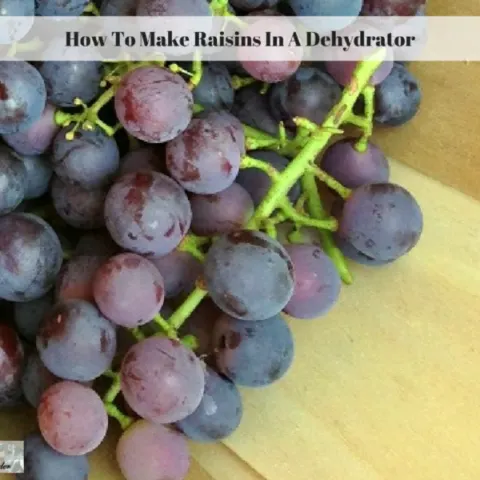I often wondered how to dehydrate garlic scapes - which are the stems that come up from garlic plants and flower.
Why Dehydrate Garlic Scapes
I knew you could preserve them in salt, but I kept thinking there must be another way - and there is. Best of all, you get pure garlic taste with nothing extra.
Dehydrated garlic scapes are perfect for combining with other homemade spices plus you can store them right on your pantry shelf.
I chose to store mine in the freezer - which is another option - only because I ran out of room in my spice cabinet!
Here is how to dehydrate garlic scapes.
Print
How To Dehydrate Garlic Scapes
Ingredients
- Fresh garlic scapes
Instructions
- Once the garlic scape is ready to harvest (I wait until the stem has circled itself twice), cut it as close to the first garlic leaf as possible.
- Bring the harvest indoors and rinse them off under cold running water.
- Cut the flower head off and set it aside. They make a great broth!
- Then cut the stem into one inch sections.
- Place these sections into a food processor and chop. You want chunks not puree.
- Place the small pieces of garlic scapes from the food process onto a solid dehydrator tray.
- Make sure they are in a single thin layer and not piled up.
- Once you have all the scapes chopped and placed on dehydrator trays put the lid on the dehydrator and turn it on.
- For those who have a dehydrator with a temperature control on it, choose 95 degrees Fahrenheit. Otherwise choose the lowest setting.
- For those who do not have a dehydrator place the garlic scapes on a non-stick pan and dehydrate them using the lowest setting on your oven.
- In a food dehydrator garlic scapes take at least 6 hours to fully dehydrate.
- They are done and ready for storage when the pieces of the garlic scapes easily crumble in your hands. They are still going to be bright green.
- Put the dehydrated garlic scapes in a glass jar or other sealable container. A freezer bag also works and is recommended if you intend to store them in the freezer.
- Date and label the container.
How To Dehydrate Food
How To Make Raisins In A Dehydrator
Learn how to make raisins in a dehydrator. Learning how to make your own raisins from grapes is easy not to mention they are delicious!
How To Dehydrate Cherries
Learn how to dehydrate cherries for long term storage or simply for a delicious, healthy fruit snack. It is really easy to dehydrate cherries at home.
Dehydrating Apples
Have you ever wondered about dehydrating apples? Learn how to dehydrate apples, how to store them and why you should dehydrate them.
Reusable Bakery Trays Make Great Produce Storage Trays
Bakery trays make great reusuable produce storage trays for root cellars or even for storing fruits or vegetables during the food preservation process.
How To Dry And Store Homemade Noodles
Learn how to dry homemade pasta plus the best method for storing homemade noodles so they stay fresh for up to six months!
Food Dehydration Tutorial
In this food dehydration tutorial you will not learn how to use a food dehydrator, but instead you will learn how to get started and why you should do it!
Four Factors That Affect Food Storage
Understanding the four factors that affect food storage is essential for keeping your food safe, especially if you intend to store it long term.
Keeping Dehydrated Food Fresh: A Guide
Master the art of keeping dehydrated food fresh: preserve flavor, extend shelf life, and perfect storage techniques in our ultimate guide.
Canning Broccoli Is No Longer Safe But You Can Still Preserve It
Although canning broccoli was once considered safe, times have changed thus freezing, dehydrating or freee drying broccoli is recommended.
Preserving and Transforming Meals with Eggplant from Food Storage
Get creative in the kitchen with preserved eggplant. Explore the endless possibilities of transforming meals with eggplant from food storage.
Preserving Herbs For Winter Use eCourse
Do you love fresh herbs but wonder if there is an easy way to preserve them for the winter?
Do you seek other ways to use herbs other than just as a seasoning on food?
There are so many ways to preserve herbs for winter use – from various methods of drying them to freezing them, but it doesn’t end there.
Some of the best ways to preserve herbs in right in the foods you would normally incorporate herbs into – pre-made seasonings, teas, butter or oil.
Then this is the course for you!
What You Will Learn In This Course:
Hang herbs to dry
Use a hanging herb dryer
Dry herbs on a window screen dryer
Dry herbs in a dehydrator
Dry herbs in an oven
Dry herbs in a microwave
Freeze herbs whole
Make herb ice cubes
Add fresh herbs to freezer meals
Add herbs to canned sauces
Preserve herbs in vinegar
Preserve herbs in oil
Preserve herbs in butter
Preserve herbs in salt or sugar
Make pre-made seasonings
Make herbal tea
Make herb jelly (plus tips on how to use these)




















